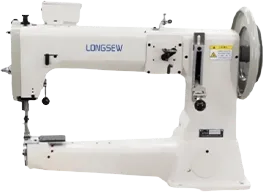A Comprehensive Guide to Effectively Using a Twin Needle with Your Sewing Machine
How to Use a Twin Needle on a Sewing Machine
Using a twin needle on a sewing machine can elevate your sewing projects, allowing you to create professional-looking hems, decorative stitches, and a variety of other effects. If you're new to sewing or have never used a twin needle before, this guide will take you step-by-step through the process of incorporating this versatile tool into your sewing routine.
What is a Twin Needle?
A twin needle consists of two needle points mounted on a single shank, allowing you to sew two parallel lines of stitching at once. This is particularly useful for creating hems on stretchy fabrics, such as knits, as it mimics the look of a double-stitched hem commonly found in ready-made clothing.
Choosing the Right Twin Needle
Before you begin, it's essential to select the appropriate twin needle for your project. Twin needles come in various sizes and widths, from 1.6mm (2.0mm between needles) to 4.0mm (6.0mm between needles), and can have ballpoint or sharp points depending on the fabric type you are sewing. Ballpoint needles are best for stretch fabrics, while sharp needles work well with woven materials.
Preparing Your Sewing Machine
1. Check the Manual Always refer to your sewing machine manual for specific instructions on using a twin needle. Most modern machines support twin needles, but it's crucial to ensure compatibility.
3. Insert the Twin Needle Position your twin needle in the needle clamp, ensuring that both needle shanks are seated correctly. Tighten the clamp screw securely to hold the needles in place.
how to use twin needle on sewing machine

4. Adjust the Threading You will need to thread both needles. Most sewing machines have two threading paths for this reason. Guide each thread through its corresponding needle, ensuring they are both firmly seated in the needle eyes.
5. Position the Bobbin Use the standard bobbin setup; the twin needle doesn't require a specific bobbin alteration. However, make sure the bobbin thread is appropriately wound and threaded through the machine.
Setting Up for Sewing
1. Select a Stitch Most sewing machines will allow you to select either a straight stitch or a zigzag stitch when using a twin needle. A straight stitch is often used for hems, while a zigzag can add decorative flair. Avoid stitches that may cause overlapping, as this can lead to jams.
2. Adjust Tension Depending on your fabric, you might need to adjust the tension settings. A typical tension range is between 4 and 6. Perform a test stitch on a scrap piece of fabric before starting on your actual project. Adjust the tension as needed until the stitches lay flat and evenly spaced.
3. Sewing Technique When you start sewing, proceed slowly to ensure that the fabric feeds evenly under the needles. Keep a steady pace to avoid skipping stitches or causing puckering, especially with elastic or stretch fabrics.
4. Finishing Once you've completed your stitching, trim any excess threads and press the seams gently with an iron. This will enhance the appearance of your work and give a polished finish.
Conclusion
Utilizing a twin needle can greatly expand your sewing capabilities, providing a professional touch to your garments and home projects. By selecting the right needle, preparing your machine, and mastering the various settings, you can achieve beautiful, durable results in no time. Happy sewing!
-
Leather Sewing Machine: The Industrial Standard for Tough MaterialsNewsJul.18,2025
-
Sail Making Machine: Heavy-Duty Stitching for Industrial and Marine NeedsNewsJul.18,2025
-
Sling Sewing Machine: The Backbone of Heavy-Duty FabricationNewsJul.18,2025
-
Leather Sewing Machine: Precision for Heavy-Duty StitchingNewsJul.18,2025
-
Big Bag Sewing Machine: Powering the Future of Bulk PackagingNewsJul.18,2025
-
FIBC Sewing Machine: Essential Equipment for Bulk Bag ProductionNewsJul.18,2025
-
Heavy Duty Leather Sewing Machine: A Must-Have for Professional LeatherworkNewsMay.28,2025





























